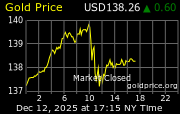Net speculative length for COMEX gold was dealt a severe blow, falling 159.2 tonnes
Again on Friday precious metals (in particular gold and silver) showed their vulnerability to market expectations of liquidity growth, or rather, lack thereof. After better-than-expected US non-farm payroll numbers, the complex fell dramatically and suddenly.
This initial reaction to a stronger reading on the US economy was most likely prompted by diminishing prospects of further quantitative easing by the Fed. Despite a persistently stronger dollar, the complex soon rebounded after talk of US military action in Iran and Syria sent investors into the relative safety of precious metals. This morning, we saw the weaker Chinese trade data weigh on all commodities. Global trade imbalances and the attendant reserve accumulation, in our view are a pillar of global liquidity. Consequently, a deepening Chinese trade deficit would be negative for precious metals, especially gold. We do expect a turnaround in the trade balance during March, but feel that the situation should be monitored.
Net speculative length for COMEX gold was dealt a severe blow, falling 159.2 tonnes — a 12-month record. This was mostly the liquidations that resulted from the market’s reaction to Bernanke’s address on 29 February. The change in the net position was the result of speculative longs being unwound (168.7 tonnes). There was also a mild decrease in short positioning (9.5 tonnes). The decline in net speculative length is not surprising, given the overly enthusiastic stance of the futures market during the previous weeks. It remains to be seen if the market is now on a more stable footing or if some excess remains. Although ETFs continued to buy gold, enthusiasm is fading. ETFs ended the week with a meagre 3.3 tonne gain to their gold holdings (compared to 8.5 tonnes in the previous week). Perhaps some bargain-buying, after the previous week’s fall, persists.
However, it appears as though ETFs remain wary of gold. Gold support is at $1,683 and $1,661. Resistance is $1,721 and $1,737. Silver support is at $33.23 and $32.57, resistance is at $34.48 and $35.05.
This initial reaction to a stronger reading on the US economy was most likely prompted by diminishing prospects of further quantitative easing by the Fed. Despite a persistently stronger dollar, the complex soon rebounded after talk of US military action in Iran and Syria sent investors into the relative safety of precious metals. This morning, we saw the weaker Chinese trade data weigh on all commodities. Global trade imbalances and the attendant reserve accumulation, in our view are a pillar of global liquidity. Consequently, a deepening Chinese trade deficit would be negative for precious metals, especially gold. We do expect a turnaround in the trade balance during March, but feel that the situation should be monitored.
Net speculative length for COMEX gold was dealt a severe blow, falling 159.2 tonnes — a 12-month record. This was mostly the liquidations that resulted from the market’s reaction to Bernanke’s address on 29 February. The change in the net position was the result of speculative longs being unwound (168.7 tonnes). There was also a mild decrease in short positioning (9.5 tonnes). The decline in net speculative length is not surprising, given the overly enthusiastic stance of the futures market during the previous weeks. It remains to be seen if the market is now on a more stable footing or if some excess remains. Although ETFs continued to buy gold, enthusiasm is fading. ETFs ended the week with a meagre 3.3 tonne gain to their gold holdings (compared to 8.5 tonnes in the previous week). Perhaps some bargain-buying, after the previous week’s fall, persists.
However, it appears as though ETFs remain wary of gold. Gold support is at $1,683 and $1,661. Resistance is $1,721 and $1,737. Silver support is at $33.23 and $32.57, resistance is at $34.48 and $35.05.















0 comments:
Post a Comment